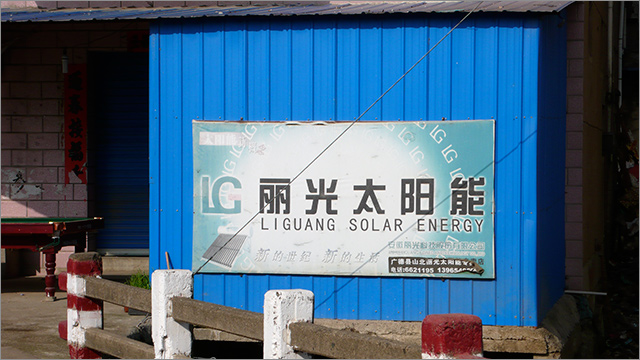
This is the thirty fourth part in the series The China Chronicles.
Read all the articles here.
As the world’s largest energy consumer and carbon emitter, China’s energy choices were expected to be at the centre of the global transition to a low carbon economy. China has exceeded expectations as the stylised facts below reveal.
China is expected to invest about USD 360 billion in renewable energy by 2020 and terminate plans to build 85 coal-fired power plants. China’s investment of about USD 78 billion in renewable energy in 2016 was the largest in the world accounting for 32 per cent of global investment in renewable energy. The EU as a whole invested about USD 59 billion in renewable energy and the USA about USD 46 billion. China’s investment in research and development of renewable energy at about USD 2 billion in 2016 was close to the USD 2.2 billion invested by the EU, which leads the ideological narrative on the significance of a global low carbon transition.
China is expected to install 36 per cent of all global hydroelectric capacity, 40 per cent of all wind capacity and 36 per cent of all solar capacity between 2015 and 2021. China will also account for 54 per cent of growth in nuclear capacity by 2040 and surpass the United States as the country with the largest nuclear power generating capacity by 2030. China’s state power grid corporation, which is the largest in the world, plans to develop a global grid that draws on wind and solar power from around the world. Five of the world’s six largest solar module manufacturers are in China and Chinese companies rank among the largest wind turbine manufacturers. Chinese companies account for 90 per cent of the production of lithium, which is critical for manufacture of storage batteries. Batteries are not only critical for managing intermittency of electricity from renewable sources but also power electric vehicles, which are seen as the future of transportation. Chinese firms also account for over 72 per cent of the production of rare earth minerals that are vital for the manufacture of renewable energy technologies. China plans to reduce energy intensity by 15 per cent in its 13th five-year plan from 2016 to 2020. China is the only developing country that has implemented efficiency standards for automobiles. Out of the 8.1 million supposedly green energy jobs available, globally 3.1 million are in China.
 In the villages in China, solar power is making itself known | Photo: Christopher/CC BY 2.0
In the villages in China, solar power is making itself known | Photo: Christopher/CC BY 2.0
These figures could intimidate even the uninitiated, but when seen in the context of China’s relative size and its level of industrialisation, China’s investments and initiatives may be interpreted as rational responses to domestic compulsions rather than a calculated effort towards global dominance of the future energy landscape. China’s dominance in low carbon technologies is by no means an exception to the trend of Chinese dominance in some other emerging sectors such as mobile communication, e-commerce and quantum cryptography.
China’s pace of industrialisation was unprecedented, but China’s path was much faster and far less energy intensive than that of Western nations. While nineteenth century United States and Briton needed 50 years to double their real income, China achieved the same feat in 9 years as it was able to use less capital per worker leveraged by western technology and knowhow. China’s demand for thermal coal (and other vital natural resources) grew faster in 19 years than the entire world’s demand grew in the previous 40 years. Though China’s economy increased 18 fold from 1980-2010, its energy consumption increased only five fold. Energy intensity per unit Gross Domestic Product (GDP) declined by 70 per cent in this period.
China’s pace of industrialisation was unprecedented, but China’s path was much faster and far less energy intensive than that of Western nations.
More recently, China’s transition from an investment and manufacturing led economy to a services and consumption led economy has lowered demand growth for energy and reduced energy intensity of its economy substantially. China’s working age population has been on the decline since 2012 and is forecast to fall by 23 per cent by 2050 which means that dependence on abundant labour for low end manufacturing is no longer possible. Increasing productivity is the only option for China, which means improving energy efficiency and lowering energy consumption by moving away from low-end manufacturing. In 2016, China’s service sector contributed 52 per cent of GDP and domestic consumption contributed 60 per cent of GDP growth. China’s changing growth model along with global demographic and consumption trends are accelerating the low carbon energy transition.
Although the low carbon transition is a phenomenon at the level of primary energy use, its driver is energy consumers and their preference for quality energy sources. The first major global energy transition that began with the industrial revolution was a quantitative and qualitative transition from almost no external energy to abundant external energy. In the United Kingdom, which was the first to make this transition from traditional biomass to fossil fuels, the shift involved the development of a wide range of technologies at the supply and demand end between 1500 and the early 1900s. The second significant transition that started in the early 1900s when the share of coal in global energy supply had peaked. The diffusion of steam engines, internal combustion engines and electric motors drove quantitative changes in the supply and relative shares of fossil fuels. The share of oil and gas increased at the expense of coal. However, it was not the scarcity of coal that led to the introduction of more expensive oil, it was technological shifts at the demand end with consumers paying attention to convenience and cleanliness that drove the shift towards the delivery of refined petroleum and grid based energy forms (natural gas and electricity). Even though their cost to consumers was above those of alternatives. The factors driving China’s low carbon transition are no different. The diffusion of technologies for mobile communication and transport that require stored electricity is driving demand for batteries, which in turn is reducing the cost of using intermittent sources of renewable energy.
The first major global energy transition that began with the industrial revolution was a quantitative and qualitative transition from almost no external energy to abundant external energy.
This transition to a low carbon economy is path dependent as initial conditions such as resource availability and other geographic, climatic, economic, social and institutional factors leading to differences in spatial structures, infrastructure and consumption patterns affect the pace of transition. Initial conditions influence the level and type of technologies used both at the consumer end and within the energy sector that are costly to change quickly. China’s initial conditions favour the transition to a low carbon economy.
Unlike the era dependent on fossil fuels that required natural endowment of resources, the transition to low carbon energy sources requires a knowledge intensive industrial production base and a large energy consumption base. China has both. Relatively higher income levels of energy consumers, especially those in urban areas in China also favours a quality transition for energy use. The fate of renewable energy sources crucially depends on the power sector because electricity is still the main vector for renewable energy. China’s spatial power densities are particularly high, especially in urban areas due to the twin influences of high population density and high per person energy use. The correlation between declining carbon intensities and rising incomes is well known. Low carbon intensities mean that energy that is more primary must be mobilized for conversion to high quality fuels such as electricity even if it means incurring economic costs and the inevitable conversion losses. Conversion deepening and increasing conversion losses of the global energy system is not necessarily unique to the current low carbon energy transition but China is pursuing the transition at relatively low levels of per person income. This limits its ability to use markets as the instrument of change. China is thus greening capitalism using mandates issued by a centralised bureaucracy. Consequently, China is less dependent on instruments such as carbon prices and taxes, which are politically difficult to implement.
Unlike the era dependent on fossil fuels that required natural endowment of resources, the transition to low carbon energy sources requires a knowledge intensive industrial production base and a large energy consumption base. China has both.
Nevertheless, there are concerns over China’s quantitative and qualitative power in influencing outcomes in the ongoing energy transition. China’s preference for mandates has meant that production of certain low carbon technologies involves state subsidies. While these subsidies have reduced the cost of low carbon energy for many consumers across the world, it has raised concerns for producers who do not have the benefit of subsidies.
The main features of a renewable energy system are lower intensity of energy sources, low efficiency of conversion, temporal and spatial discontinuity, dramatic change in the economic concept of energy scarcity and a leading role for a network wherein energy, matter, information and monetary values circulate. All this means higher levels of complexity and control. Increasing significance of renewable energy and related challenges of matching peaks in provision with those of consumption is likely to entail higher levels of state involvement in monitoring and controlling consumption of energy at the household level. This may not be among desired outcomes for many across the world. However, given that the global low carbon transition project is essentially a top-down process of state led energy transformation one cannot really complain about Chinese state interventions that have brought the low carbon goal much closer for the rest of the world.
The views expressed above belong to the author(s). ORF research and analyses now available on Telegram! Click here to access our curated content — blogs, longforms and interviews.




 In the villages in China, solar power is making itself known | Photo:
In the villages in China, solar power is making itself known | Photo:  PREV
PREV


